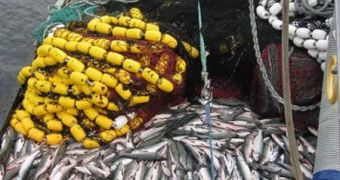According to a new investigation, it would appear that one of the most widely used indicators for assessing the health of fisheries around the world is misleading, and largely inaccurate.
The study learned that using the average catch trophic level as an indicator for fish population health levels yields erroneous results half of the time. As such, nearly 50 percent of analyzed ecosystems may actually be in poorer health than originally thought.
An international group of fisheries experts conducted the new study, which is detailed in latest issue of the esteemed scientific journal Nature.
“Applied to individual ecosystems it's like flipping a coin; half the time you get the right answer and half the time you get the wrong answer,” explains study scientist Trevor Branch.
The expert holds an appointment as a aquatic and fisheries researcher at the University of Washington (UW). He is also the lead author of the new research paper.
“This is important because that measure is the most widely adopted indicator by which to determine the overall health of marine ecosystems,” the investigator says.
The new investigation was sponsored by the US National Science Foundation (NSF) Division of Environmental Biology (DEB) and Division of Ocean Sciences (DOS).
“Monitoring all the fish in the sea would be an enormous, and impossible, task.This study makes clear that the most common indicator, average catch trophic level, is a woefully inadequate measure of the status of marine fisheries,” says DEB program director Henry Gholz.
Researchers with the new study explain that the concept of trophic level associated with a certain species refers to the place that particular animal occupies in the food webs at the ecosystem where it lives.
For example, microscopic algae and phytoplankton make up the first level of the trophic chain, whereas sharks, whales and tuna are at the larger trophic level. Currently, the international trend is to fish down the food web.
This means that fishermen move to capturing species at the middle of the food web, after having exhausted supplies of top predators, such as tuna. As such, the new indicator does not apply at all times.
“The measure only declines if fisheries aimed for top predators first, but for the Gulf of Thailand the measure fails because fisheries first target mussels and shrimp near the bottom of the food web, before shifting to fish higher up,” Branch explains.
“The research shows the importance of synthesis to furthering an understanding of fisheries impacts and management strategies,” explains the section head of the NSF DOS, Phillip Taylor.
“For complex ecosystem interactions, answers can only come from repeated scrutiny of data, and comparisons of different scientific methods and systems. This synthesis points to a path forward to evaluate fisheries influences on ocean ecosystems,” he concludes.

 14 DAY TRIAL //
14 DAY TRIAL //